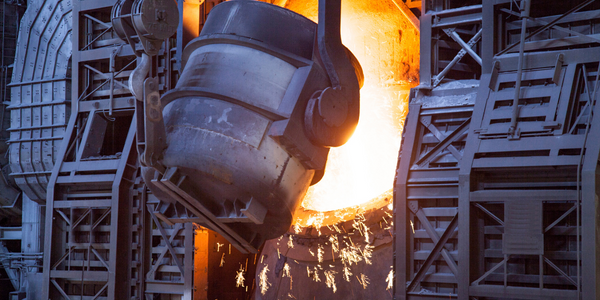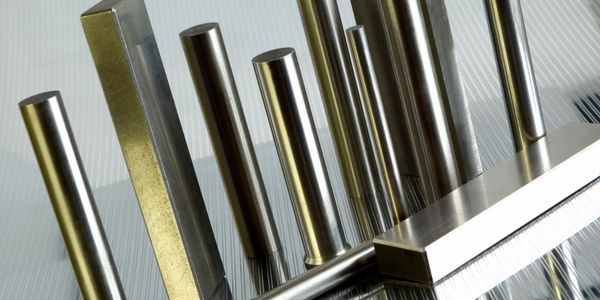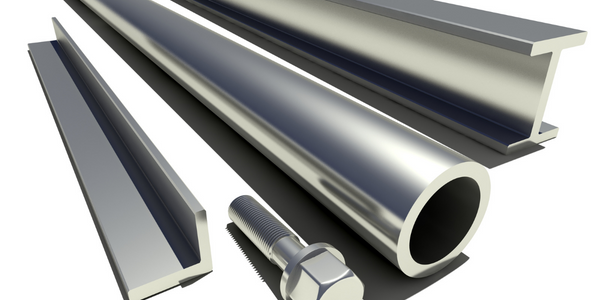Continuous Casting Machines in a Steel Factory

- Automation & Control - Distributed Control Systems
- Automation & Control - Human Machine Interface (HMI)
- Processors & Edge Intelligence - Embedded & Edge Computers
- Metals
- Process Manufacturing
- Machine Condition Monitoring
With a very broad range of applications, steel is an important material and has been developed into the most extensive alloy in the engineering world. Since delivering high quality is absolutely crucial for steel plants, ensuring maximum productivity and the best quality production are the keys to competitiveness in the steel industry. Additionally, working conditions in steel factories are not suitable for workers to stay in for long periods of time, so manufactures usually adopt various machines to complete the steel production processes. However, the precision of these machines is often overestimated and the lack of flexibility also makes supervisors unable to adjust operating procedures. A renowned steel factory in Asia planned to improve its Distributed Control System (DCS) of furnaces as well as addressing the problem of insufficient accuracy. However, most well-known international equipment suppliers can not provide a satisfactory solution and local maintenance because the project needed new technologies to more accurately control equipment operations. By implementing Advantech’s automated monitoring and control solution, steel factories can not only improve the manufacturing processes but can also allow users to add additional functions to the existing system so as to make sure the operation runs at high efficiency.
The company decided to utilize its own extensive expertise and cooperated with the System Integrator to develop the required subsystems so that enhancing the billet surface quality and dynamic mold level control based on the original framework. Apart from software, the improvement of the continuous casting process needed to come with powerful and robust devices to provide reliable system operation, the models were required to: support Microsoft operating systems to easily develop customized programs; have better CPU performance to run software; offer various I/O interfaces and expandable connections to meet the required functions; have a wide operating temperature range and anti-interference ability to resist harsh industrial and high electromagnetic environments. According to the customer’s requirements, two subsystems needed to be implemented in the continuous casting machine, including the mold level control system and hydraulic cylinder control system. For the first subsystem, Advantech proposed the TPC-1571 Touch Panel Computer, embedded in the electrical cabinet, to be used as the HMI for users to communicate with the APAX-5571XPE Programmable Automation Controller (PAC) and a variety of APAX-5000 I/O modules (APAX-5017H, APAX-5028, APAX-5040 and APAX-5046). The APAX models are to be used as a compensator in order to provide the stabilization of the molten steel in the mold of a continuous casting machine. With an Intel Atom Dual Core processor, the TPC-1571 is a powerful computer and is able to deal with large amounts of data while its panel features and mounting options offer a better user interface and save installation space compared to a desktop PC with monitor. The APAX-5571XPE, with Intel Celeron M grade CPU and built-in Windows XP Embedded operating system, makes it a high performance and application ready platform to shorten user’s development time. By usingthe APAX I/O modules to collect the signals (including pressure, level, sliding gate, motor, temperature, switch and light), this mold level control system can fully monitor various devices and conditions as well as controlling the casting processes. When the original PID controller is unable to deliver enough signals, managers can switch to the new subsystem which provides faster data acquisition (up to 1000 samples) so as to compensate DCS dynamic level control. Furthermore, since they have been designed with isolated protection, Advantech’s APAX serial products are very resistant to field interference. As for the second subsystem, the APAX-5620 RISC-based controller is responsible for executing hydraulic cylinder control tasks by connecting to different APAX-5000 I/O modules (APAX-5017, APAX-5040, APAX-5046 and APAX-5343E). By providing a CAN bus communication interface, the APAX-5620 can control the steel’s thickness via a CANopen sensor. Unlike the competitor's products, to add an extra pipe to cool the system down, Advantech’s controller and modules support wider operating temperatures to ensure that devices would not be damaged by high temperaturessince the control box has to be installed next to the machine and the field temperature is often above 50˚C. The developer can also configure related hardware settings for the I/O modules through built-in utilities and can effortlessly create the related application programs under the Microsoft Visual Studio .NET or C/C++ programming environment. Technology Deployed: TPC-1571H: Touch Panel Computer With Intel Atom Dual Core Processor APAX-5571XPE: PACs with Intel Celeron M CPU APAX-5017H: 12-ch high speed analog input module APAX-5028: 8-ch analog output module APAX-5040: 24-ch digital input module APAX-5046: 24-ch digital output module APAX-5620: PAC with Marvel XScale CPU, CAN, WinCE APAX-5017: 12-ch Analog Input Module APAX-5040: 24-ch digital input module APAX-5046: 24-ch digital output module APAX-5343E : Power Supply for APAXExpansion Module
Related Case Studies.











